How Does Cuba Relate To Animal Farm
Animals That Alive in Cuba
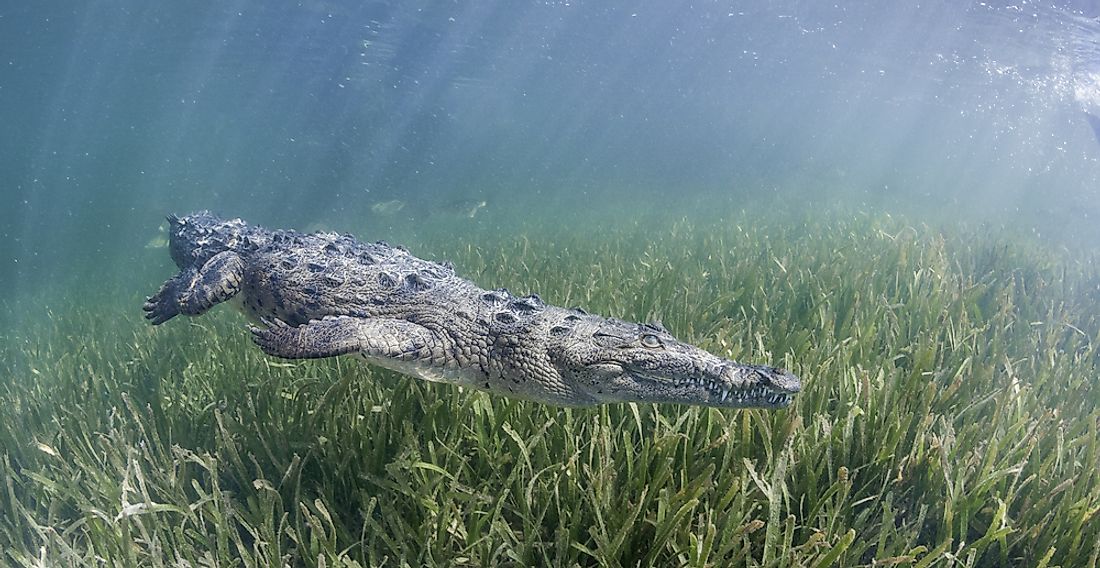
Republic of cuba is a nation that is situated in the Caribbean at the bespeak of convergence of the Caribbean area Sea, the Atlantic Ocean, and the Gulf of Mexico. The nation is endowed with a broad variety of wildlife species including 17,801 known creature species, 270 bacteria species, 707 chromista species, 5,844 species of fungi (lichen included), one,440 protozoa, as well every bit 9,107 plant species. Some of the brute species in the nation include the likes of the Cuban treefrog, the spinner dolphin, the Cuban basis iguana, and many more.
10. Cuban Ground Iguana
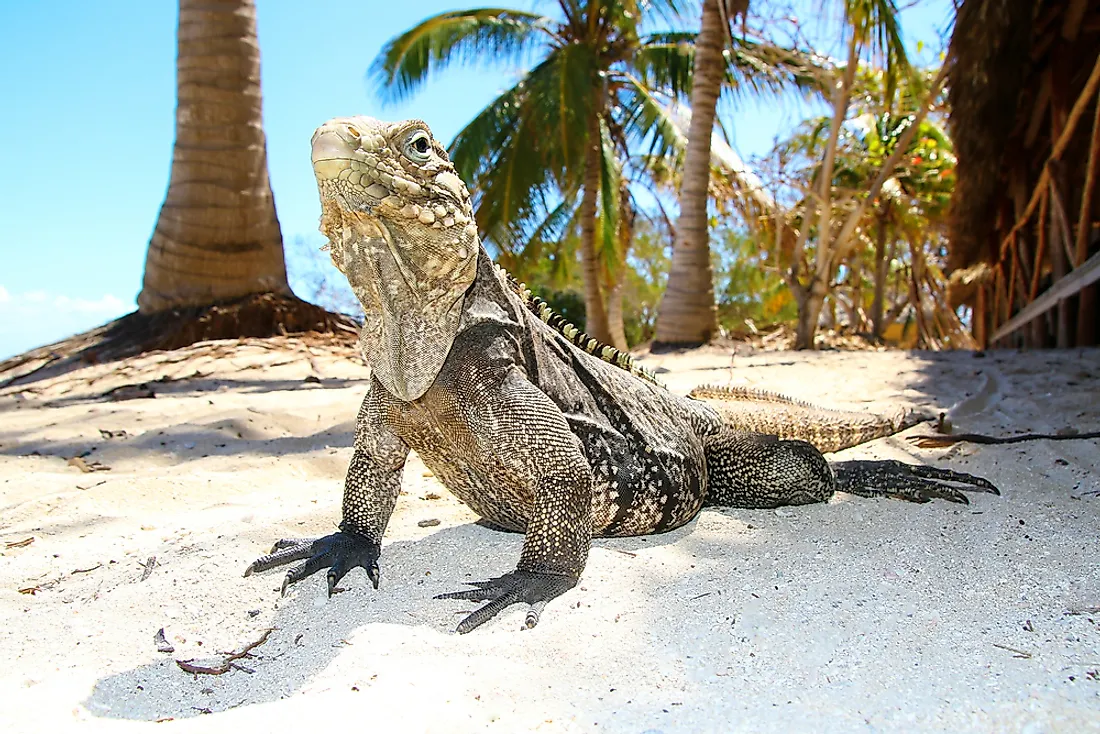
The Cuban footing Iguana, scientific name Cyclura nubila, is a species that is currently categorized as vulnerable. Among its genus, Cyclura, this iguana is the largest. Regarding size, this iguana has the potential of weighing up to 15 pounds and have a length of between 4 and v feet. Their color can be either brown or nighttime gray with a prominent banding. They have a lifespan of about fifteen years and have a very pleasant behavior, which makes them pop among people who like pets. In their habitats, they enjoy climbing trees and darting on rock formations.
nine. State Crab
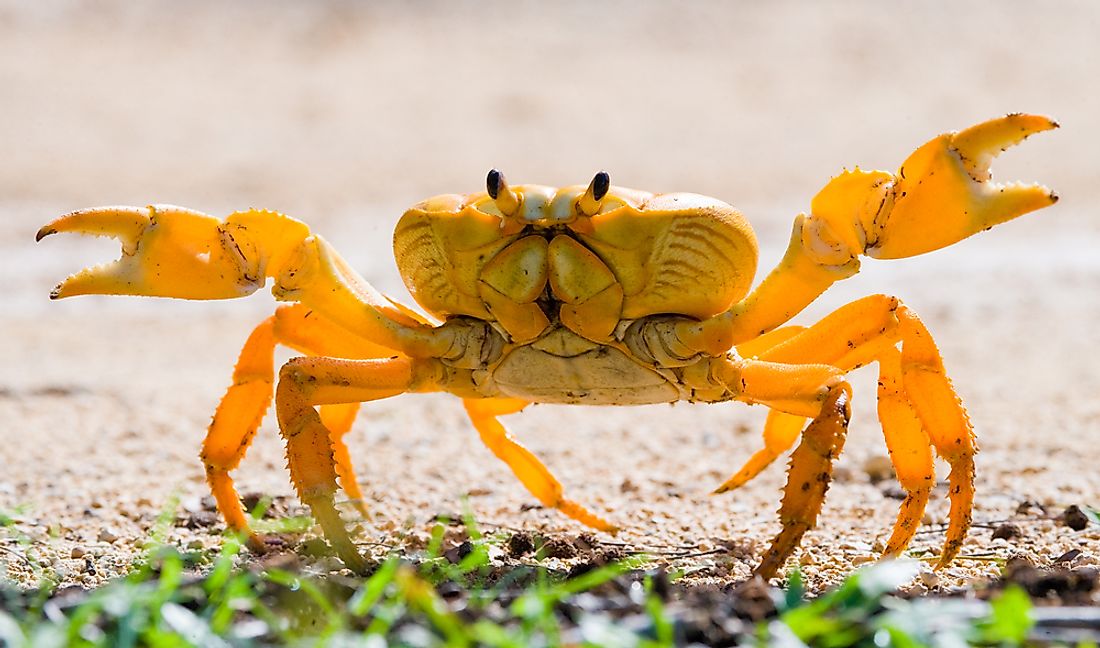
Land venereal refer to any terrestrial crabs of the family Gecarcinidae. These crabs commonly have square bodies and become dorsum to the sea when they are adults. Their diet includes both plants and animals. Concerning their habitats, the venereal adopt mangrove thickets, fields, and swamps. Across the carapace, the adult members boilerplate four inches wide and have an average weight of virtually 18 ounces.
eight. Cuban Crocodile
The Cuban crocodile, scientific proper noun Crocodilius rhombifer, is a small species that is capable of growing upward to around 16 anxiety in length. Plant only in Cuba, the reptiles average between 150 and 180 pounds in weight while average lengths range between six.9 and vii.5 feet. Once existing in high numbers, the fauna has been hunted most to extinction past people who want its meat and skin. Of all the New Earth Crocodiles, the Cuban crocodile is the most endangered. Interbreeding with the American Crocodile is also threatening its existence since the species is beingness polluted by the hybrids. Their lifespan is between l and seventy years.
7. Cuban Finch
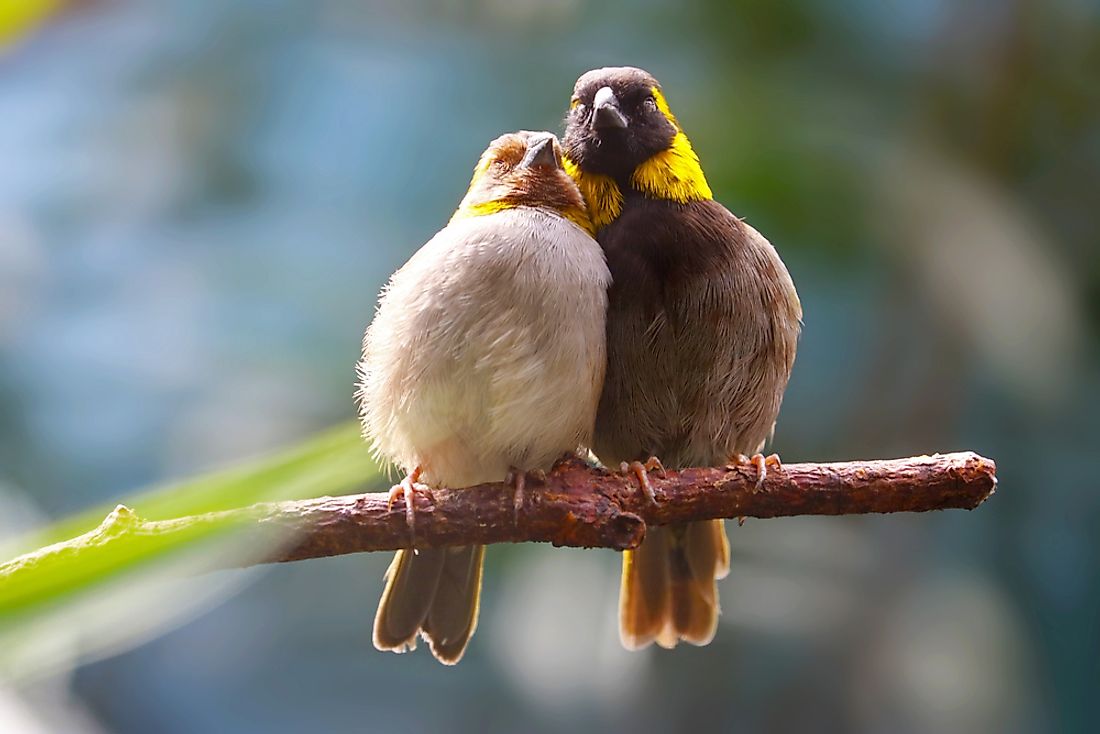
Besides known as the Cuban grassquit, the finch is native to Cuba, the Caicos Islands, and the Commonwealth of the bahamas. The small-scale birds prefer habitats in areas where in that location are shrub-lands and tropical forests. The birds are capable of growing upwards to 3.5 inches in length. Like the Cuban trogon, this bird does not do too well in captivity. Nevertheless, experienced breeders are able to breed them in captivity with great care. They are aggressive birds that are capable of killing members of their own species although the level of aggression is varied. The nutrition includes things like seeds, leaves, and other foods.
6. Cuban Treefrog
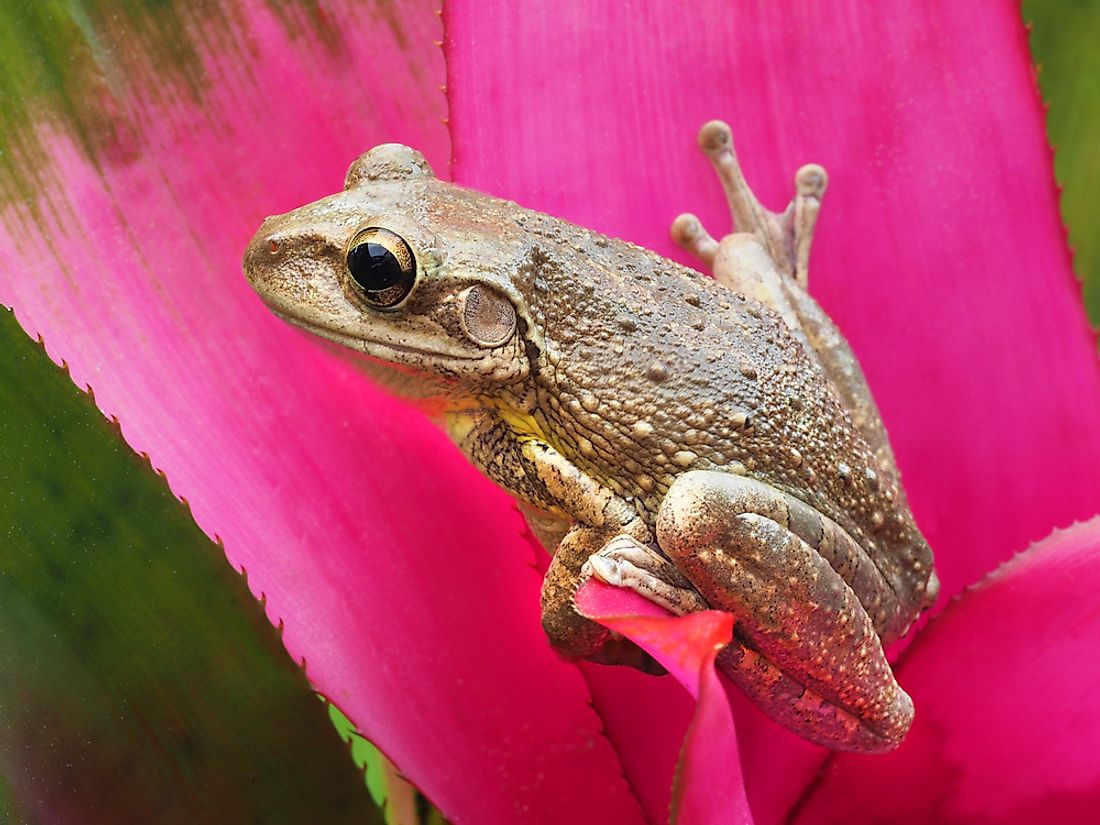
Widespread in Cuba and with the scientific proper noun Osteopilus septentrionalis, the Cuban treefrog is the largest of its kind in Northward America. The frog prefers to live in habitats that are moist and close to houses or trees. Ane of the about interesting things about this frog is its strange nutrition. The frog will eat almost anything that it can find, including other frogs, lizards, and toads. For this reason, they are considered a destructive invasive species. Seeing them during the twenty-four hours is difficult considering they are nocturnal. Their lengths average between 3 and 5.5 inches.
5. Cuban Solenodon
The Cuban solenodon is a small-scale animal that is currently extremely endangered. In fact, due to their small numbers, they were once thought to exist extinct until a member of the species was caught back in 2003. The animals resemble shrews in physical appearance. Over millions of years, the primitive insectivores have had very little going on in the way of evolution. The lack of evolution is probably considering the animal is highly specialized in killing its prey through the employ of its potent paralyzing venom. The low populations are due to non-native predators such as cats and dogs.
4. Desmarest's Hutia
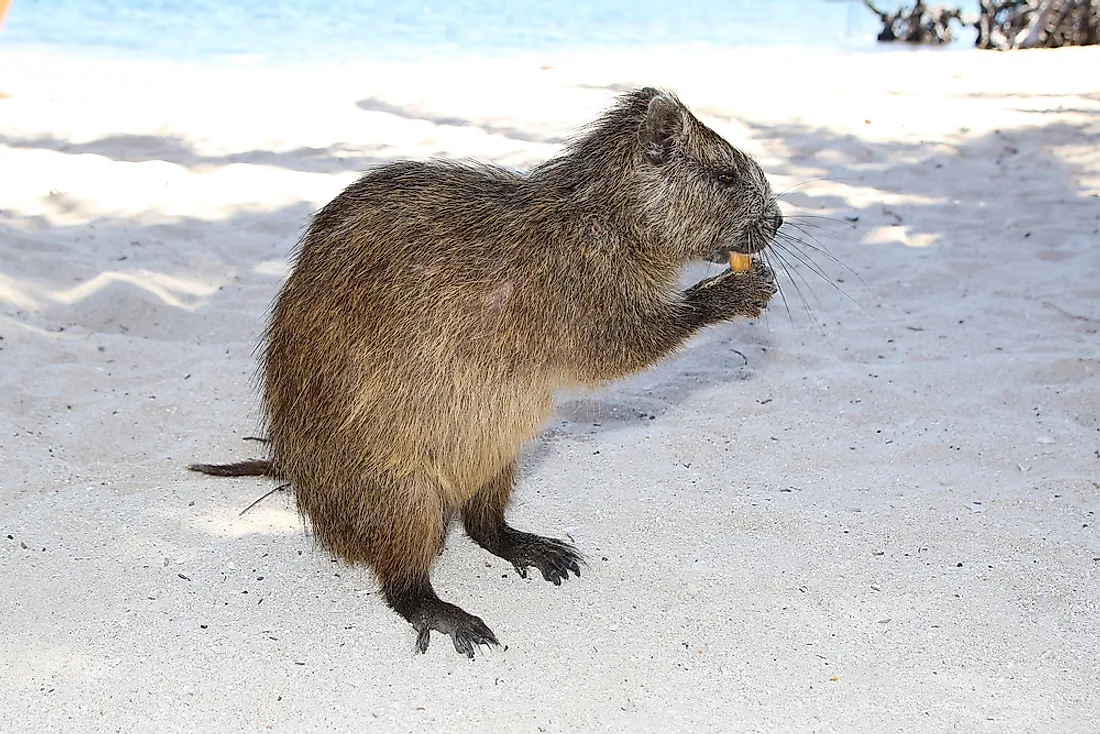
Likewise known as the Cuban Hutia, the Desmarest's hutia is the largest widespread mammal in the nation and tin grow up to 24 inches in length. These rodents are spread all over Cuba and accept been effectually for thousands of years. Role of the reason is that they do not have a lot of opposition from other larger mammals. Of the 25 species of this rodent identified, at that place are studies suggesting that merely seven are still effectually with the rest beingness extinct. The mammals are generally shy and prefer living in pairs in the leafy canopies or in holes in the ground or trees.
three. Cuban Tody
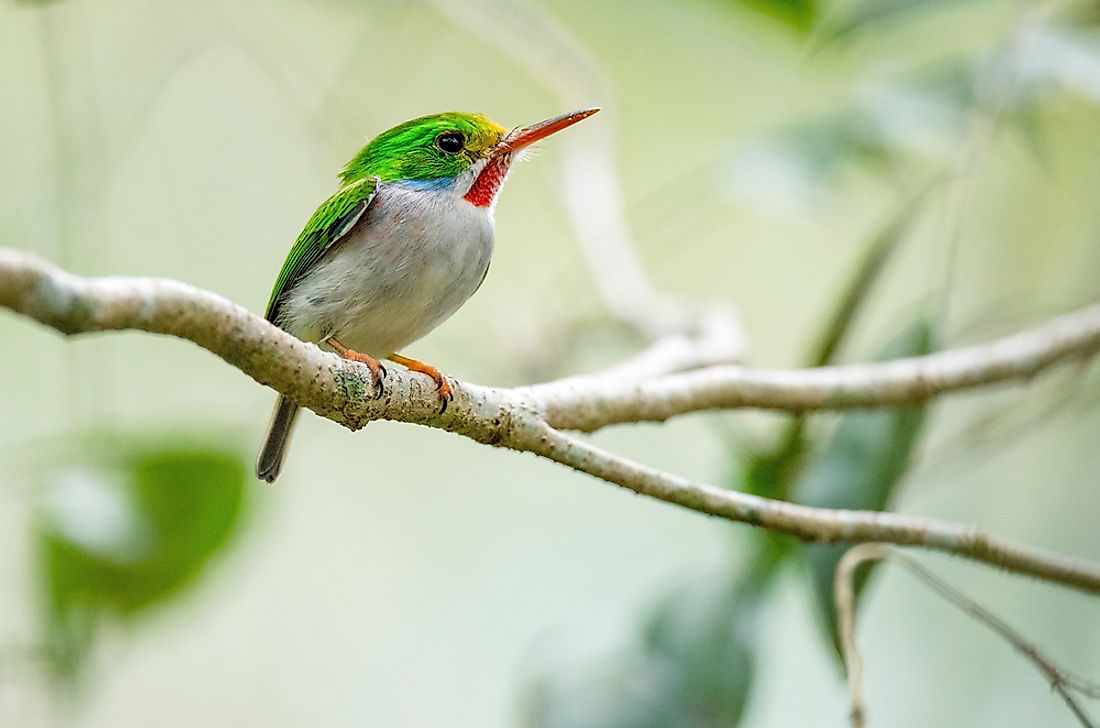
This small bird is native to Cuba and nearby islands. On boilerplate, they measure about four.three inches in length and have a size of about ii.ane ounces. Some of the distinguishing features include a crimson pharynx, blue ear patch, pink sides, and xanthous lores. The animals often stay in pairs and feed mainly on insects although other animals such as lizards and spiders may also be eaten.
2. Spinner Dolphin
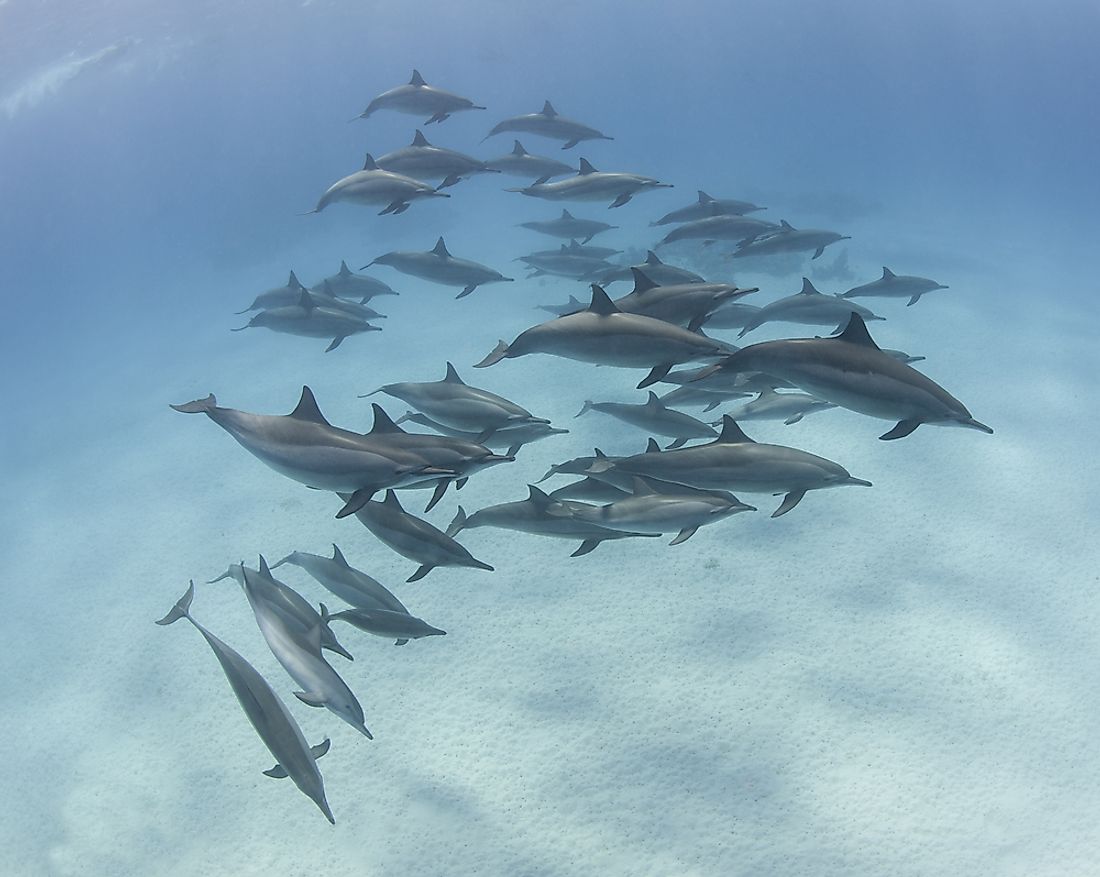
This dolphin is relatively small and is mostly known for its acrobatic antiques. Adults average betwixt 50 and 92 inches while the boilerplate weight ranges between 50 and 174 pounds. The fish have three-way colour patterns with a night gray dorsal surface area, light grayness sides, while the underside is white or pale gray. Most of them prefer to rest during the 24-hour interval and feed at dusk. Some of them do non go to rest in trophy.
i. Cuban Trogon
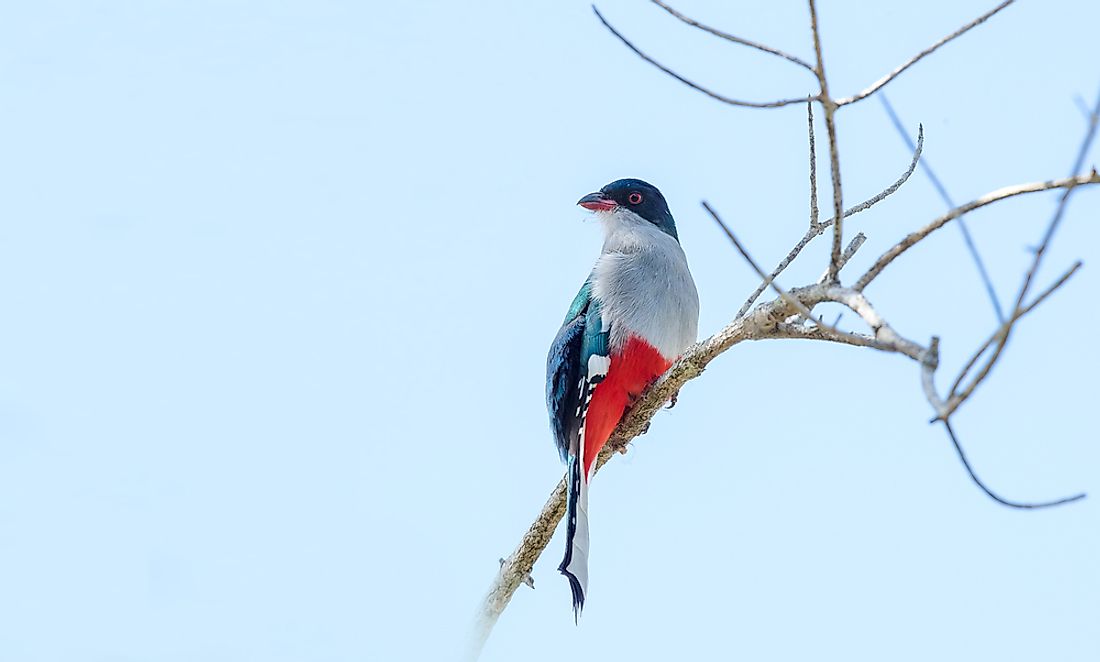
The diminutive Cuban trogon is unique because it is the nation'due south national bird. While it is unclear why this is the case, most people believe information technology is considering the bird's colors of blue, red, and white resemble those on the national flag of Cuba. Another theory is that it was chosen because information technology does non survive in captivity, which may be representative of the beloved of freedom by Cubans. The habitat of this bird is mainly characterized by woodlands with nesting washed in thick and dense thickets. The crown is deep blue, their chests are white, while the lower half of the torso is red.
Source: https://www.worldatlas.com/articles/10-cuban-animals.html
Posted by: marshallbelank.blogspot.com

0 Response to "How Does Cuba Relate To Animal Farm"
Post a Comment